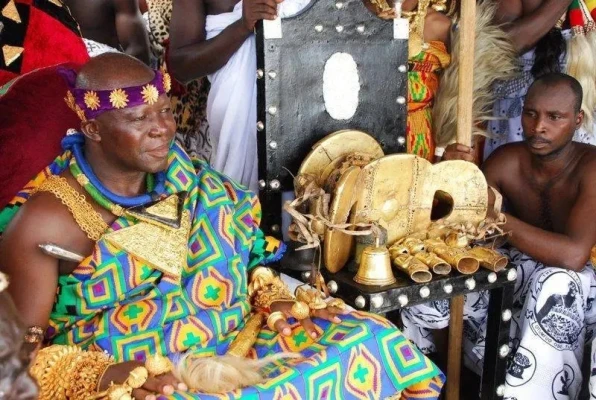Prince Owusu-ansah: A Life of...
November 13, 2025

The Golden Stool, known as Sika Dwa Kofi in Ashanti-Twi, represents not only the royal throne of the Ashanti people but also embodies the divine symbol of power and unity within the Asante Confederacy. Legend has it that Okomfo Anokye, the High Priest and co-founder of the Asante Confederacy, miraculously caused the Golden Stool to descend from the heavens and land on the lap of the first Asante king, Osei Tutu. This remarkable event bestowed upon the stool the spirit of the Asante nation, encompassing the living, the departed, and those yet to come.
In the realm of Ashanti culture, each stool is considered the embodiment of its owner's soul. When not in use, these sacred stools are placed against a wall to allow passing souls to find respite upon them. The Golden Stool, however, must never touch the ground; instead, it rests on a blanket as a mark of reverence. During a king's inauguration, he is ceremoniously raised and lowered over the stool without making direct contact.
Handling the Golden Stool is a privilege reserved solely for the Asantehene (King of Ashante) himself. It is carried on a pillow to the king during important occasions and solemn ceremonies. When the Golden Stool is not in use, it occupies its own throne, known as the hwedom dwa, positioned to the left of the king's throne to face the crowd.
The rich history of the Golden Stool has not been devoid of conflict. Numerous wars have erupted over its ownership, highlighting its immense significance in Ashanti culture. In 1900, Sir Frederick Hodgson, the Governor of the Gold Coast, sparked armed rebellion by demanding to sit on the Golden Stool. This event, known as the War of the Golden Stool, ultimately resulted in the annexation of Ashanti by the British Empire.
Crafted from a single block of Alstonia boonei wood, the Golden Stool stands at 46 cm high with a platform measuring 61 cm wide and 30 cm deep. Its entire surface is adorned with gold inlays and embellished with bells to warn the king of impending danger. Replicas of the stool are produced for chiefs, and during their funerals, these replicas are ceremonially blackened with animal blood as a symbol of power passed down through generations.
Despite the stool's rarity, it remains a focal point of Asante culture, symbolizing succession, power, and the enduring spirit of the Ashanti people. Each stool's unique design and symbolism reflect the individual it represents, making it a cherished artifact deeply embedded in the cultural heritage of the Ashanti.
November 13, 2025
November 6, 2025
November 5, 2025
November 4, 2025
October 31, 2025
October 30, 2025
October 30, 2025
October 30, 2025
September 25, 2025
September 12, 2025